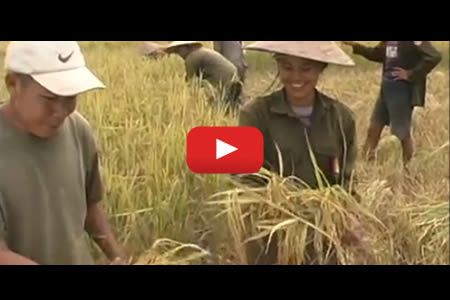Manual weed control
What is Manual or Hand Weeding?
Weeds are removed and collected from crop fields by hand. The collected weeds are piled on bunds or in case of certain weeds, taken home to feed animals. Manual weeding is a part of integrated weed management that involves the integrated use of cultural, manual, mechanical and/or chemical control methods.
Why Control Weeds?
- Prevent yield loss due to weed competition.
- Maintain purity and/or quality and market price of harvested grain.
- Prevent build-up of weed seeds in soil.
- Prevent weeds that may attract insects or rodents (rats) or act as a host for diseases.
- Prevent clogging of field irrigation channels to facilitate water flow.
- Reduce time and cost of land preparation and weeding operations.
Why Use Manual or Hand Weeding?
- Nonchemical; ecologically sound.
- Provides clean and thorough weeding.
- Good for resource-poor farmers where labor is available at low wages.
Limitations of Hand Weeding
- Labor-intensive and time-consuming
- High drudgery and stress on labor (bending all the time to remove weeds)
- Difficult if the soil surface is not moist and loose
- Costly (if wages are high)
- Difficulty in identifying and removing certain grassy weeds at early stages (e.g. weedy rice, Echinochloa spp.). Have to remove such weeds from the field at flowering time.
- Weeds may survive if pulled and dropped into standing water.
How to Hand Weed

1. Weeds need to be controlled from planting until the crop canopy closes.

2. Start hand weeding within two weeks of planting (or when weeds are large enough to grasp).
3. Repeat the weeding once or twice more at 30-32 and 40-42 days after transplanting (DAT) or 40-42 and 50-52 days after sowing (DAS).

4. Do not allow weeds to flower and set seeds in a crop field.
5. Use good land leveling to reduce weeds.








